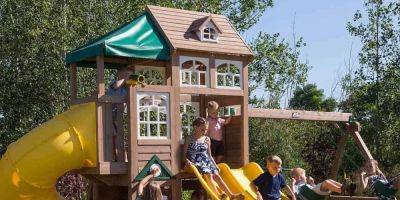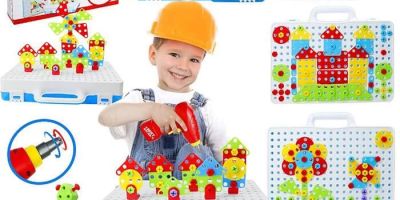- 1. The Importance of Imaginative Play for Children
- 2. Choosing the Right Toys to Encourage Imaginative Play
- 3. Creating the Right Environment for Creativity
- 4. How to Join Your Child in Imaginative Play
- 5. Why Choose Knight Toys for Imaginative Play
1. The Importance of Imaginative Play for Children
Imaginative play, often referred to as pretend play or fantasy play, is an essential aspect of a child’s development. This type of play allows children to use their creativity and imagination to explore the world around them, develop problem-solving skills, and build emotional intelligence. Through imaginative play, children create scenarios where they can act out different roles, which helps them understand the complexities of human behavior, empathy, and relationships.
Engaging in pretend play also stimulates cognitive development by encouraging children to think critically, make decisions, and explore different viewpoints. Research has shown that imaginative play promotes language development, social skills, and even academic abilities, making it a crucial part of early childhood education. For parents and caregivers, encouraging imaginative play can offer an opportunity to bond with children, as well as guide them through various emotional and developmental stages.
2. Choosing the Right Toys to Encourage Imaginative Play
When it comes to encouraging imaginative play, the right toys can make all the difference. Unlike traditional toys that simply entertain, toys that spark creativity and require active engagement encourage children to think outside the box and use their imagination. Here's how to choose the best toys for promoting imaginative play:
2.1 Open-Ended Toys
Open-ended toys are versatile, allowing children to use them in multiple ways and create countless scenarios. Blocks, dolls, figurines, and building sets like Lego are perfect examples of open-ended toys. These types of toys don’t have a fixed purpose, giving children the freedom to decide how they want to interact with them. For instance, a set of wooden blocks can become anything from a house to a castle or even a spaceship, depending on the child’s imagination.
2.2 Role-Playing Toys
Role-playing toys such as play kitchens, doctor kits, or action figures help children act out real-world roles. These toys encourage social interaction and allow children to experiment with different careers and life experiences. A kitchen set, for example, can spark hours of imaginative play as children pretend to cook meals, serve food, and even host dinner parties. These toys teach important life skills, like responsibility, cooperation, and communication.
2.3 Creative Arts and Crafts Kits
Art supplies like paints, crayons, clay, and craft kits encourage children to express their ideas visually. By creating their own designs, children can develop fine motor skills and an understanding of shapes, colors, and textures. These creative outlets allow children to visually represent the stories they are imagining in their minds, fostering both artistic expression and creative thinking.
3. Creating the Right Environment for Creativity
In addition to providing the right toys, it’s important to create an environment that fosters creativity and imagination. The space where children play should be conducive to exploration, experimentation, and free thinking. Here’s how you can set up such an environment:
3.1 A Designated Play Area
Having a dedicated space for imaginative play helps children focus and immerse themselves in their creativity. Whether it’s a playroom, a corner of the living room, or even a backyard fort, a designated play area allows children to escape into their imaginative worlds. Ensure the space is filled with a variety of toys, books, and supplies that inspire creativity, and make it comfortable and safe for hours of play.
3.2 Limit Screen Time
While technology can offer educational content, excessive screen time can hinder imaginative play. Too much time spent in front of screens limits the time children spend actively engaging with their surroundings, using their creativity, and interacting with others. To encourage imaginative play, limit screen time and instead promote activities that involve physical movement, interaction with others, and imaginative scenarios.
3.3 Encourage Interaction and Collaboration
Imaginative play is even more enriching when children are encouraged to play with others. Playdates, family activities, or group play can promote collaboration, social interaction, and the sharing of ideas. Encouraging children to play together, rather than separately, allows them to develop empathy and communication skills while exploring new and exciting imaginative scenarios.
4. How to Join Your Child in Imaginative Play
As a parent or caregiver, you play a significant role in nurturing your child’s creativity. While it’s important to give children the freedom to explore their imaginations independently, participating in imaginative play with them can strengthen your bond and offer valuable teaching moments. Here are some tips on how to join in the fun:
4.1 Be an Active Participant
Rather than just observing your child’s play, actively engage with them. Become part of the story, whether it’s pretending to be a customer at their pretend grocery store or a fellow astronaut on a mission to Mars. By taking on roles, you can model behavior and encourage your child to think of new ways to incorporate different characters, objects, or scenarios into their play.
4.2 Follow Your Child’s Lead
While it’s important to engage with your child’s imaginative play, it’s equally important to follow their lead. Let them take control of the narrative and make the decisions. Supporting your child’s ideas helps boost their confidence and encourages them to explore their creativity further. Don’t be afraid to let them lead the way, even if their imagination takes you on an unexpected adventure!
4.3 Ask Open-Ended Questions
Asking open-ended questions during play can spark your child’s imagination and get them thinking critically about the scenarios they’re creating. Questions like, "What happens next?" or "How can we solve this problem?" help children develop problem-solving skills and allow them to expand on their ideas in a meaningful way.
5. Why Choose Knight Toys for Imaginative Play
At Knight Toys, we specialize in offering toys that encourage imaginative play for children of all ages. Our selection includes open-ended toys, role-playing sets, and creative arts kits that spark creativity and help children develop essential skills. We believe in the power of imaginative play to shape a child’s cognitive, emotional, and social development, and we’re committed to providing high-quality toys that nurture these skills. Visit our website today to explore our collection and give your child the tools they need for endless imaginative adventures!





